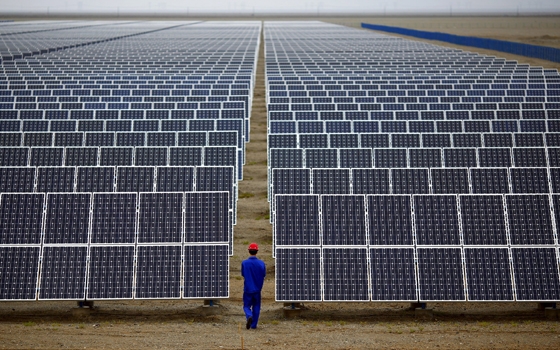Qatar plans to have 2% of its power output or 1.8 giga watts (GW), accounted for by renewable resources by 2020, a new report has shown.
"Qatar solar energy has a three-phase plan to subsequently increase Qatar's solar energy output to 2.5GW per year," said Qatar Solar Technologies (QSTec) chairman and CEO Dr Khalid K al-Hajri in an interview with The Business Year, whose 2015 Qatar Edition was launched in Doha yesterday.
He stressed that these plans "have come one step closer to fruition" with the June 2014 unveiling of the state-of-the-art solar panel manufacturing factory in Ras Laffan Industrial City, which produces photovoltaic cells with singularly efficient solar energy needs.
"The near future is very exciting. We will start the production of high-quality polysilicon for solar panels in early 2015. At the same time, we will be conducting a number of activities related to awareness of the solar industry," al-Hajri said.
Al-Hajri noted that the factory complements Qatar's first world-class solar test facility at the Qatar Science and Technology Park (QSTP), which was inaugurated in 2012. In collaboration with GreenGulf and Chevron, the QSTP-based facility tests emerging solar technologies from around the world in order to identify those best suited to the climate of the Gulf region.
According to al-Hajri, the solar panel factory aims to reduce Qatar's dependence on fossil fuels. At present estimates, the facility will produce 8,000 tonnes per annum of high-grade polysilicon for export to the world's solar energy markets, which have seen exponential growth in the past decade.
"This demonstrates Qatar's commitment both to the alternative energy sector and to being on the cutting edge of renewable energy," al-Hajri said.
He noted that the cells being produced in the country are setting a new benchmark for the economic sustainability of solar power in Qatar.
"The solar panels take about 12 months to produce the same amount of energy required to be manufactured, and can then be expected to continue producing solar energy for another 25 to 30 years," he said.
He also said the facility will reinforce local photovoltaic systems, citing the recently completed Solar Smart-Grid Project at the Education City. With 1.68MW of photovoltaic systems, it is capable of powering a range of buildings inside the Qatar Foundation (QF) campus.
Al-Hajri said demand for the types of cells being produced at Ras Laffan will increase further in the coming years as Qatar continues its process of powering its desalination plants using solar energy.
Also, to guarantee a carbon-neutral World Cup in 2022, al-Hajri said Qatar plans to have the new air-conditioned stadiums draw the greater portion of their energy load from 100MW grid of photovoltaic and solar thermal panels.
"Qatar's own solar needs promise to make the investment in photovoltaic cell production a profitable one – and even if they didn't, international solar demand would provide a growing export market," al-Hajri said.
in photovoltaic cell production a profitable one – and even if they didn't, international solar demand would provide a growing export market," al-Hajri said.
According to studies conducted by the UN Environmental Programme, a single square kilometre of land in Qatar receives as much solar energy in one year as is contained in 1.5mn barrels of oil .
.
"Unlike 1.5mn barrels of oil, solar energy isn't exhaustible," al-Hajri stressed.
Gulf Times
11 May






















































